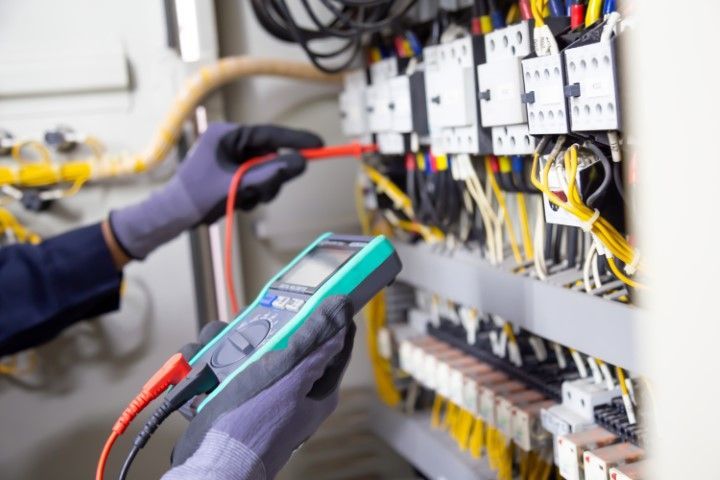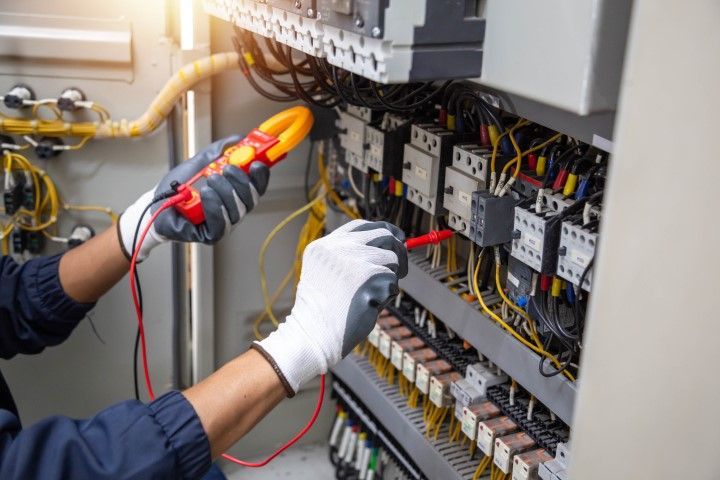Power House Electrician
(219) 732-2775
Electrical Maintenance and Repair Services in Gary IN
When it comes to electrical systems, safety and performance go hand in hand. Whether you're managing a home, office, or small business, keeping your electrical setup in good condition is crucial. Worn-out wires, flickering lights, or circuit issues might seem small at first, but they can lead to larger problems if left unchecked. That’s why having a clear, step-by-step process for electrical maintenance and repair in Gary, IN is essential. At our company, we follow a reliable process that keeps things running smoothly and safely — without the stress or confusion.
Inspection and Diagnosis
We start with a full inspection of the property’s electrical system. This helps us spot early signs of wear, damage, or overload before they turn into serious risks. During this step, we check everything from outlets and switches to circuit breakers and wiring. We use tools that detect faults or drops in performance, helping us find the source of the issue quickly. Whether it’s a tripped breaker or a hidden wiring concern, we make sure no detail is missed.
Planning the Work
Once we know what needs fixing or improving, we move on to planning. This step includes preparing a clear timeline, listing materials required, and ensuring all safety standards will be met. We also explain the plan in simple terms so you know what to expect. Whether the job involves rewiring a section of your home or replacing outdated parts, we make sure everything is set before any tools come out. This helps avoid delays, surprises, or extra costs later.
Performing Repairs and Maintenance
With the plan in place, we get to work. Our team follows careful procedures to carry out repairs or upgrades, ensuring everything is done correctly the first time. Whether we’re fixing a faulty connection or replacing an outdated panel, we use trusted methods and materials. We know how important it is to limit downtime, so we work efficiently while keeping your space clean and safe. This step is where our hands-on skill really matters — and where our trained electrician ensures every task meets proper standards.

Final Testing and Follow-Up
After the work is complete, we don’t just pack up and leave. We test the repaired systems to confirm everything is working as it should. From load testing to voltage checks, this final step gives you peace of mind. We also walk you through any changes made, offer tips for future maintenance, and answer any questions. This follow-up ensures you're not left in the dark — literally or figuratively.
Electrical issues don’t have to be stressful. With a solid plan, skilled hands, and a local team that cares, your system can stay safe and reliable for years to come. If you need help from a dependable electrician, give us a call or send a message. We're ready to assist with any electrical maintenance or repair — big or small. Let’s keep your power flowing safely and smoothly.
Electrical Maintenance Checklists for Homeowners and Property Managers
Electricity is something we often take for granted until something goes wrong. Whether you own a home or manage a property, keeping your electrical system in good condition is essential for safety, comfort, and avoiding unexpected repair costs. Regular checks can help you catch small issues before they turn into bigger problems. Below, you’ll find four practical electrical maintenance checklists designed to guide homeowners and property managers through important steps to keep electrical systems working properly.
Seasonal Inspection Checklist
At least once each season, walk through your property and look for any signs of wear. Examine all visible wires, especially in basements, attics, and garages. Look for frayed cords, loose outlets, and discolored switch plates. Test smoke detectors and carbon monoxide alarms to be sure they have fresh batteries and work as expected. Also, check outdoor lighting and outlets to confirm they are sealed against moisture and weather damage. Seasonal checks help you keep up with changes in temperature and humidity that can affect wiring.
Appliance and Equipment Checklist
Over time, appliances can draw more power or develop faults. Make a list of all major appliances, including ovens, refrigerators, washing machines, and heating or cooling systems. Inspect their power cords for damage and check that each one is plugged into the correct outlet, without overloading circuits. If you notice flickering lights when large appliances are running, that could be a sign you need to have the electrical panel examined. This checklist also includes verifying that surge protectors are working and that no extension cords are used as permanent wiring solutions.
Safety Devices and GFCI Checklist
Ground Fault Circuit Interrupters (GFCIs) are special outlets designed to prevent shocks, especially in kitchens, bathrooms, and outdoor areas. Test all GFCI outlets by pressing the “Test” button and confirming they switch off power. Then, reset them to restore power. Also, check circuit breakers in your electrical panel to ensure they are properly labeled and free of corrosion. If you find any outlets that are warm to the touch or have burn marks, stop using them and contact a licensed electrician right away. Properly working GFCIs and breakers are critical for protecting people from electric hazards.
Lighting and Fixture Checklist
Walk through every room and test all light switches. Replace bulbs that have burned out and consider switching to energy-efficient LED options. Examine light fixtures for loose fittings or exposed wiring. For exterior lights, clean fixtures to remove dirt and insects that can affect performance. If you have landscape lighting, inspect connections and timers to ensure they function correctly. Proper lighting checks not only keep your property safe but can also lower energy bills.
Taking the time to follow these checklists can help prevent costly repairs and improve safety. If you ever feel unsure about an issue or see something unusual, it’s always best to consult a qualified residential or commercial electrician rather than trying to fix the problem yourself. For professional assistance or questions about electrical maintenance, please contact us today. Our team is ready to help you keep your home or property safe, efficient, and well-maintained all year round.
Electrical Repair in Older Homes: What to Expect
Older homes have a special charm that modern houses often can’t match. Beautiful woodwork, tall ceilings, and classic designs create an inviting atmosphere. But with age also come hidden challenges, especially when it comes to electrical repair. If you live in or plan to buy an older property, it’s important to understand what you might encounter before starting any work. Here are four things you can expect when dealing with electrical repairs in an older home.
Outdated Wiring
Many older houses still have wiring systems that were installed decades ago. Some even have knob-and-tube wiring or aluminum wires, which are no longer considered safe by today’s standards. Old wires can crack, fray, or overheat. These issues may not be obvious at first glance, but they can lead to fire hazards over time. Before you begin any repair or renovation, a qualified electrician should inspect your wiring. An inspection helps you find out if the wiring needs to be replaced or if parts of the system can be upgraded to meet current codes.
Limited Electrical Capacity
Modern life demands more power than in the past. Decades ago, homes were built to run a few lights, a radio, and maybe a small fridge. Today, most people rely on air conditioning, computers, large appliances, and many other devices. This increased demand can overload old circuits. You might notice frequent tripped breakers or outlets that feel warm to the touch. Upgrading the electrical panel or adding extra circuits is often necessary to keep up with your power needs. This process requires careful planning and professional help to avoid overloading the system.
Fewer Outlets and No Grounding
Older homes often have fewer outlets in each room, making it hard to plug in all your devices. You might find yourself using multiple extension cords or power strips, which can create safety risks. Also, some outlets in older houses lack proper grounding. Ungrounded outlets pose a shock hazard and can damage sensitive electronics. Part of electrical repair may involve installing new grounded outlets in convenient locations, which can also improve the overall safety of your home.
Hidden Surprises Behind Walls
When you start any electrical repair project in an older house, you should expect surprises behind walls or above ceilings. Previous owners might have made changes over the years, sometimes without following proper guidelines. You could find wires spliced together with electrical tape or junction boxes buried behind drywall. These hidden problems can be dangerous if left in place. A skilled professional will know how to spot and fix these issues safely. Even though it might take extra time and money to uncover and correct old repairs, it’s worth the effort to protect your home and family.
If you are concerned about the electrical systems in your older property, don’t wait until problems get worse. Contact us to schedule an inspection or discuss your needs. Our team has experience working with historic and vintage homes. We can help you plan updates that keep the character of your space while making it safer and more reliable. Whether you need help replacing old wiring, installing more outlets, or improving your electrical panel, we’re here to guide you through every step. An experienced commercial and residential electrician can give you peace of mind, knowing that your home’s electrical system meets today’s standards and supports your lifestyle.

